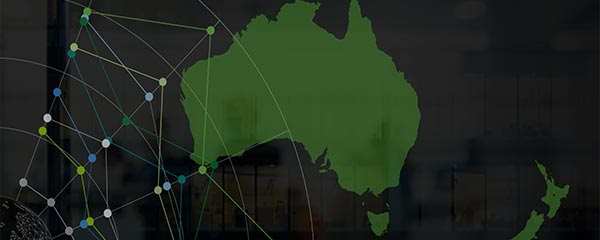Story Highlights
- Gallup released its State of the Global Workplace: 2021 Report
- Negative emotions are high in South, East, and Southeast Asia
- Improving wellbeing is critical for recovery in the regions
When the first wave of COVID-19 crashed over densely populated South, East and Southeast Asia, people in the regions feared the coronavirus would create insurmountable societal and economic challenges. As the pandemic continued, causing new problems and bringing pre-existing ones to light, Gallup asked those employed in the regions how they were feeling -- documenting life evaluations and measuring employee engagement and wellbeing in the State of the Global Workplace:2021 Report.
Amid the pandemic, negative emotions in South, East and Southeast Asia reached some of the highest levels recorded within these regions in the last decade.
- In South Asia, 43% of employees said they experienced worry, 34% experienced sadness, and 32% experienced anger "a lot of the day yesterday," and 49% of all adults said that their life had been affected by the coronavirus situation "a lot."
- In East Asia, the least-affected region of the three, 35% of employees said they experienced worry, 15% experienced sadness, and 22% experienced anger during a lot of the day the previous day, and 37% of adults said that their life had been affected a lot.
- In Southeast Asia, 47% of employees said that they experienced worry, 30% said that they experienced sadness, 24% experienced anger during a lot of the previous day. And 42% of adults said that their life had been affected a lot.
| South Asia | East Asia | Southeast Asia | Global average | ||||||||||||||||||||||||||||||||||||||||||||||||||||||||||||||||||||||||||||||||||||||||||||||||
|---|---|---|---|---|---|---|---|---|---|---|---|---|---|---|---|---|---|---|---|---|---|---|---|---|---|---|---|---|---|---|---|---|---|---|---|---|---|---|---|---|---|---|---|---|---|---|---|---|---|---|---|---|---|---|---|---|---|---|---|---|---|---|---|---|---|---|---|---|---|---|---|---|---|---|---|---|---|---|---|---|---|---|---|---|---|---|---|---|---|---|---|---|---|---|---|---|---|---|---|
| % | % | % | % | ||||||||||||||||||||||||||||||||||||||||||||||||||||||||||||||||||||||||||||||||||||||||||||||||
| Worry | 43 | 35 | 47 | 41 | |||||||||||||||||||||||||||||||||||||||||||||||||||||||||||||||||||||||||||||||||||||||||||||||
| Sadness | 34 | 15 | 30 | 25 | |||||||||||||||||||||||||||||||||||||||||||||||||||||||||||||||||||||||||||||||||||||||||||||||
| Anger | 32 | 22 | 24 | 24 | |||||||||||||||||||||||||||||||||||||||||||||||||||||||||||||||||||||||||||||||||||||||||||||||
| Among employed adults | |||||||||||||||||||||||||||||||||||||||||||||||||||||||||||||||||||||||||||||||||||||||||||||||||||
| Gallup World Poll | |||||||||||||||||||||||||||||||||||||||||||||||||||||||||||||||||||||||||||||||||||||||||||||||||||
In this same period of time, 67% of those employed at the time of the pandemic said that they had received less money than usual from their employer or business in Southeast Asia and 55% lost pay in South Asia. In East Asia, just 30% of those employed at the time of the pandemic lost pay and one-third worked fewer hours -- though these are better outcomes than the global average (50% and 49%, respectively), it is still nearly one-third of this group facing economic hardship.
All of these hardships are hurting the wellbeing of millions of people. And while many organizations in South, East, and Southeast Asia are on the track of economic recovery, employees' wellbeing will dictate the future of the regions' long-term health.
A Net Thriving Organizational Culture
By studying the human behavior and wellbeing of more than 99% of the world's population, Gallup uncovered the five universal elements of wellbeing that differentiate a thriving life from a struggling or suffering life:
CAREER: You like what you do every day.
SOCIAL: You have meaningful friendships in your life.
FINANCIAL: You manage your money well.
PHYSICAL: You have energy to get things done.
COMMUNITY: You like where you live.
In any organization, those elements can be measured and used to assess a workplace culture of wellbeing -- a net thriving culture, in short. It's a valuable metric because wellbeing elements affect each other and the life experience of the individual. Currently, 21% in South Asia, 29% in East Asia, and 26% in Southeast Asia have thriving wellbeing, compared to the average of 32% thriving globally.
Today, businesses can have an enormous impact on each employees' wellbeing, far beyond the obvious career and financial elements. The first step of creating a thriving organizational culture is through employee engagement.
The Role of Employee Engagement in Wellbeing
Employee engagement has a reciprocal relationship with wellbeing; in fact, Gallup's research shows that managers who demonstrate care, individualize to the employee, and hold frequent coaching conversations can significantly reduce the negative emotions of employees and greatly improve workplace performance at the same time.
Economic improvement is necessary but insufficient to truly improve lives in South, East, and Southeast Asia. Currently, employee engagement in South, East, and Southeast Asia is not high -- at 24%, 14%, and 23%, respectively, though it is similar to the global engagement average of 20% -- and improving it could have a great impact on wellbeing.
Though the responsibility for improving engagement lies with leaders, the mechanisms of engagement belong to managers.
Managers, more than anyone else in an organization, are closest to the day-to-day lives of employees and the physical, social, financial, community and especially career facets of their wellbeing. A manager who acts as a coach and not a boss is in the best position to affect the wellbeing of their employees, although managers will need development to equip them for the role and the new challenges that accompany this shift. And the sooner the better: thriving employees tend to be more engaged and show better performance.
Though the responsibility for improving engagement lies with leaders, the mechanisms of engagement belong to managers.
Managers who help workers enrich their wellbeing, enrich their companies. Thus, it's imperative that companies in this region help managers help their people -- and keep a check on the overreliance on policies, programs and perks, which can be a reflexive response in many companies. If it were possible to legislate workplace culture through policies, programs and perks, most organizations would not have any cultural problems.
In this endeavor to build a net thriving culture, the return on investment in wellbeing can be extraordinary -- and hope is on the organization's side.
Hope Is a Key Theme
The State of the Global Workplace: 2021 Report asked employees to imagine a life ladder with 10 rungs, and to say on which rung they "stand at this time" and on which rung they think they will "stand in the future, say about five years from now." Their answers are combined to generate a net thriving score. As the negative emotions suggest, most employees in South, East, and Southeast Asia believe they're low on life's ladder now. But they don't expect to stay there.
As part of calculating the net thriving score, when asked "On which step of the ladder would you say you personally feel you stand at this time?" South Asians' average was 3.6, East Asians' was 5.5, and Southeast Asians' was 5.6. But when asked, "Just your best guess, on which step do you think you will stand in the future, say about five years from now?" South Asians' predicted 5.3, East Asians' predicted 6.7, and in Southeast Asia it was 7.4.
The expectation for the future is consistently higher than the current conditions, which is important. Hope is a key theme in a net thriving culture. It's important to resiliency. Despite today's challenges, people have hope for a brighter future. Indeed, hope for better wellbeing in the future and the will to achieve it is the key to recovery in South, East, and Southeast Asia.
Learn more about Gallup's findings:
- Sign up for a webinar to learn more about global workplace trends from a Gallup expert.
- Learn how we help organizations everywhere improve employee engagement.
- Create resilient teams and organizations by enhancing employee wellbeing.






